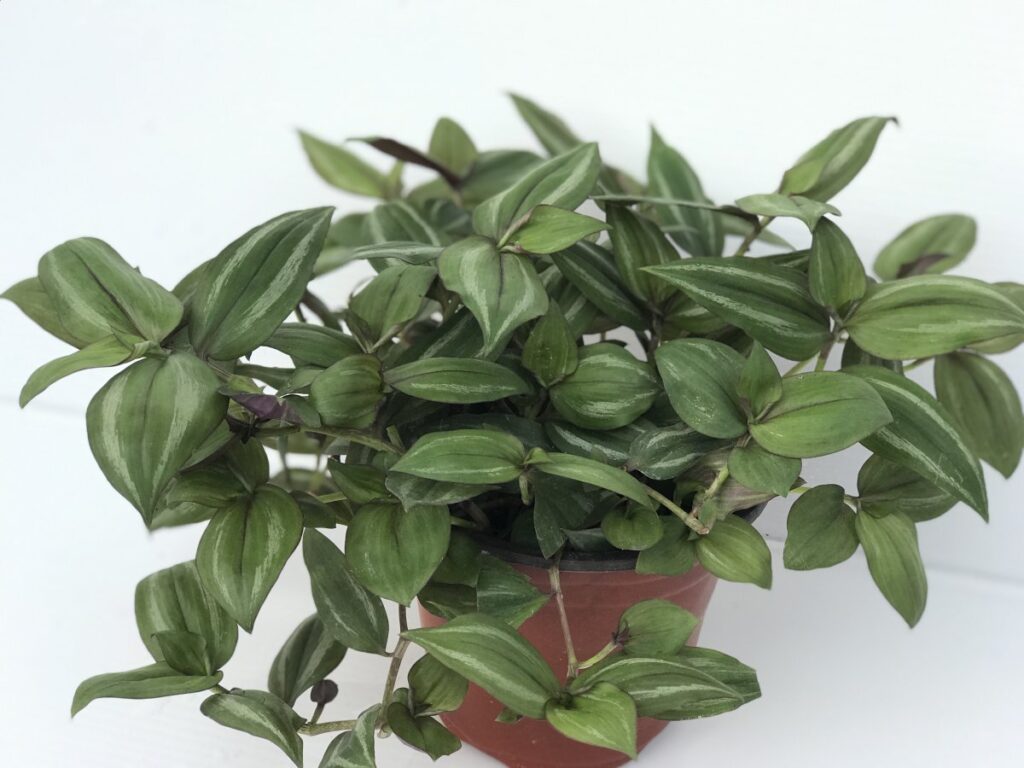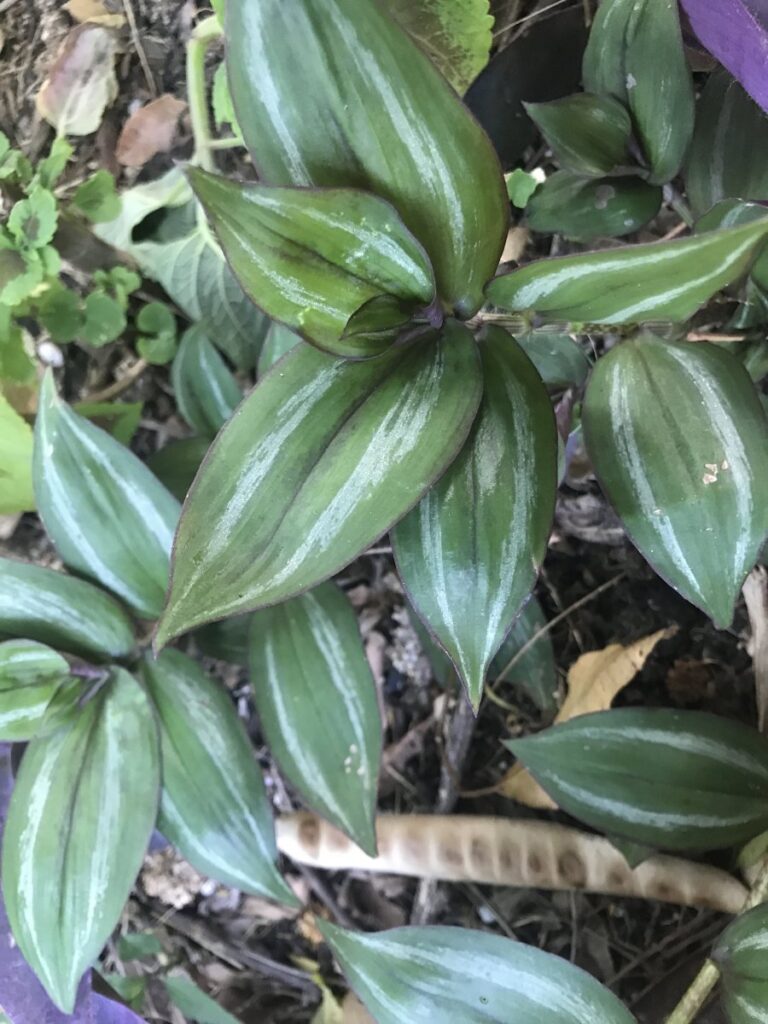
Wandering dude, inch plant
Tradescantia zebrina, also called “Wandering Dude,” or Inchplant is a popular and easy-to-care-for vining houseplant.
Tradescantia plants come in a variety of foliage variegations, and in the case of zebrina, the leaves are striped with purple, green, and whitish stripes.

Tradescantia Zebrina Description
Outdoors, Wandering Dude is a creeping groundcover, hence the name. It features succulent stems with oval leaves. The flowers are small and purple, and don’t frequently appear on indoor plants. Leaf color brightens with additional sunlight but watch for scalding.
Wandering Dude grows about 6 to 12 inches high, but will generally spread outward for several feet. They do break easily at the nodes, which can prevent them from spreading further.
Indoors, the trailing stems make them excellent candidates for hanging planters or placing on shelving to drop elegantly in a lovely verdant shower of foliate.
Tradescantia Zebrina Care Tips
Outdoors, tradescantia are tender perennials, native to Central and South America. They will grow in the landscape in the Southern U.S., such as zones 9 through 11, where frosts are rare and freezes are non-existent.
These vining plants are very tolerant of a variety of soils and light levels, but for optimal growth, choose bright, but indirect light to retain a bushy and healthy appearance.
Buy Tradescantia Zebrina Here
| Species Name: | Tradescantia zebrina |
| Common name(s): | Wandering Dude, Inch plant, spiderwort |
| Defining Characteristics: | The tropical foliage features trailing vines and striped leaves of purple, green, and white |
| Temperature requirement: | Tropical plant, hardy down to 40°F, thrives in 55 to 80°F |
| Watering frequency: | Outdoors, water regularly to establish young plants. Indoors, water when soil dries out and mist regularly. |
| Lighting: | Bright indirect light or partial shade. |
| Soil type: | Rich well-draining soil, high in organic |
| Growth rate: | Fast growth rate depending on conditions. |
| Height: | From 6 to 12 inches high, trailing |
| Origin: | Central and South American tropics |
| Regional locality: | Unknown |
| USDA Hardiness Zone: | 9 to 11 |
| Toxicity Notes: | Mildly toxic when injested |
| Common Problems: | Lack of sunlight causes poor leaf coloring |
| Additional Notes: | Fertilize every two to four weeks during spring and summer |
Sources: University of Wisconsin-Madison
